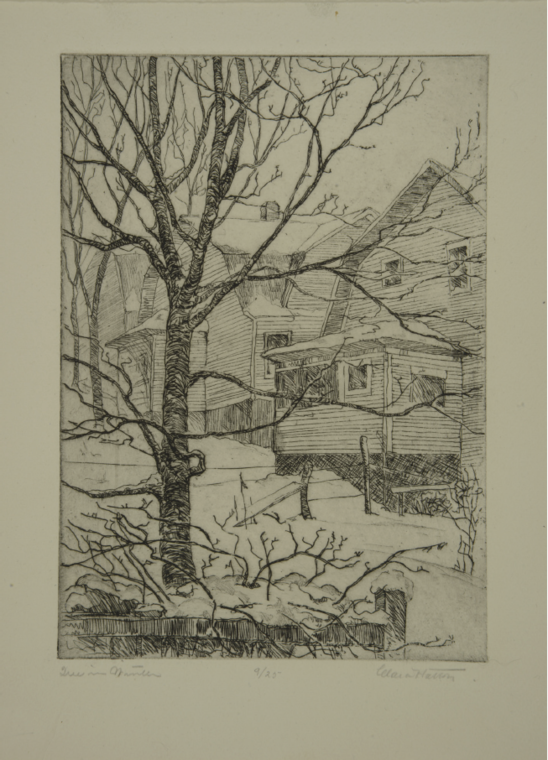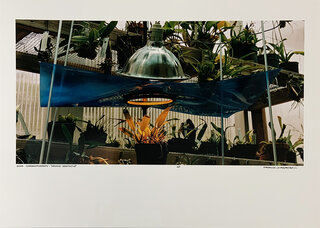
Hatton’s etchings are best understood within the context of the Etching Revival (1860s-ca. 1930). By the end of the eighteenth century, printmaking in the West had fallen largely out of favor as a vehicle for original expression and was relegated mostly to reproductive purposes. In the 1860s European and American proponents of the Etching Revival, such as the American artist James Abbott McNeill Whistler, began to react against this state of affairs as they sought to recover the status printmaking enjoyed during the time of Rembrandt. These artists considered etching to be more authentic and expressive than other printmaking techniques, in part, because of the hand drawn character of its line. Close examination of Hatton’s line work in Tree in Winter, a view from the artist’s kitchen window in Lawrence, Kansas, reveals the technique’s autographic quality. Hatton’s printed lines appear drawn with a directness that records even the slightest tremor of the artist’s hand.




